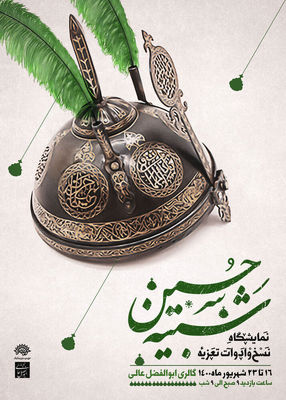The collection is composed of 3060 objects dating from the Safavid period in the 16th century until contemporary Iran, the organizers announced.
The exhibition has been set up in four sections, one of which is dedicated to tazieh costumes donned by thespians and musicians during a performance. The objects on display in this section date back to the Safavid period and Qajar period (1789-1925).
The attires, most of which are hand-sewn, represent the great skills of the Iranian artists of the periods.
Equipment such as swords, daggers, armors, shields, helmets, and maces are also on view in a special section. The objects have ornamental motifs and elements, which have sunk into oblivion in contemporary Iranian art.
The exhibition also showcases a collection of masks and puppets, which are exclusively used in tazieh performances. Tazieh groups began using masks and puppets from the Qajar period.
The exhibit also puts on view 2700 copies of tazieh scripts, which have been crucial in the development of studies on this genre of theatrical performance in the country.
The showcase will run until September 14 at the gallery located in Somayyeh Street.
The Iranian passion play tazieh was registered on the UNESCO List of the Intangible Cultural Heritage of Humanity in November 2010.
Tazieh represents religious events, historical and mythical stories and folk tales. Each performance has the four components of poetry, music, song and motion.
However, stories about the uprising of Imam Hussein (AS) and his companions against the oppressive Umayyad dynasty in 680 CE are more highly regarded by tazieh troupes and audiences.
Performers are always male, and female roles are played by men, most of whom are amateurs who gain their living through other means but perform for spiritual rewards.
Source:Tehran Times

